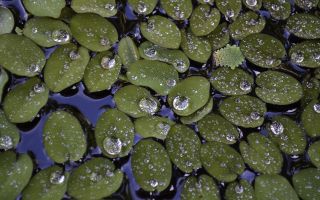Content
- 1 What is this plant, what it looks like and where does the duckweed grow
- 2 Types of duckweed
- 3 The chemical composition of duckweed grass
- 4 Medicinal properties of duckweed
- 5 The use of duckweed in traditional medicine
- 6 Contraindications
- 7 Growing duckweed in an aquarium
- 8 Collection and preparation of grass
- 9 Conclusion
Medicinal properties and contraindications of duckweed are not known to many. After all, there is a prejudice that it clogs the water and does not bring any benefit. In fact, plates of duck grass floating on the surface of water bodies promote the production of oxygen and enrich the space around it.
What is this plant, what it looks like and where does the duckweed grow
Duckweed is an aquatic plant that lives in stagnant bodies of water. It is often used as food for ducks. For this reason, it was nicknamed duck grass. Duckweed belongs to the Aroid family and the genus Flowering monocots. She lives in places with temperate and tropical climates, but only in fresh water. You can meet the plant almost everywhere, except for the Far North.
The description of the duckweed will help you imagine how it looks. The root system of the plant is poorly developed. It serves as an anchor that holds the plates on the water surface. The flattened long stem of duck grass is called fronds. The diameter of the leaf-shaped body is 0.5-1 cm.The flowering process is extremely rare. The flowers have no petals or sepals.
The duckweed plant, the photo of which is shown below, reproduces by budding. The flowering process takes place from May to September. The fruiting period of the plant is in July-August. Fruits are 1 mm wide and have wing-like edges. Subsequently, seeds appear from them.
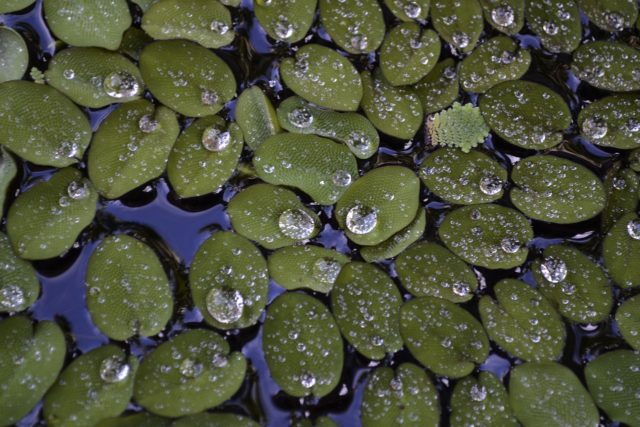
Types of duckweed
More than 10 plant species are represented in nature. Classification is carried out according to habitat and external features. Each type has a certain range of applications and contraindications.
Humpback duckweed
A distinctive feature of the species is its fast reproduction rate. The stems of the plant contain a rich supply of fiber. This allows it to be used as feed for fish, geese and pigs. The reproduction process of humpback duck grass is carried out by daughter shoots formed from side pockets.
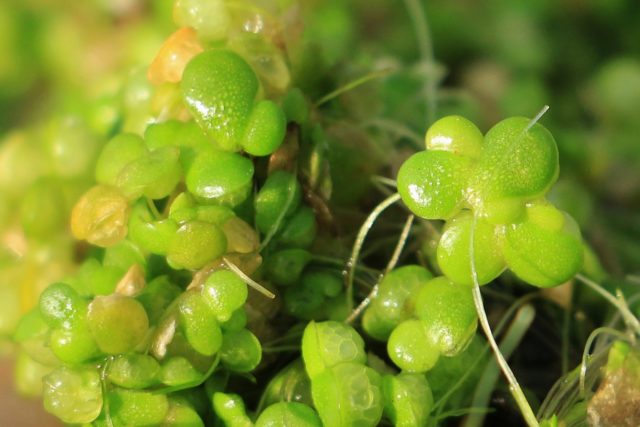
Rootless Duck Grass
Rootless duckweed is considered the most common. She lives even in the Moscow River. The plant is distinguished by the tiny size of the plates and unpretentiousness. It is very difficult to see it on the surface of the water surface. This type of plant can survive temperatures of at least 10-12 ° C.
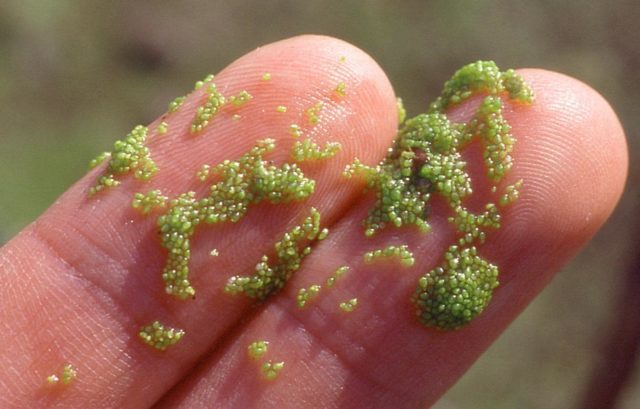
Small duckweed (marsh)
Marsh duckweed is more often than other species used for medicinal purposes. It is also popularly called "frog sack". It has pronounced antispasmodic, antimicrobial and hemostatic properties.It is often used to heal snake bites, treat rheumatism and various inflammations. In addition, fresh small duckweed can be used as food.
The medicinal properties and contraindications of the duckweed are mandatory for all supporters of non-traditional therapy. It is only beneficial when consumed in moderation, in accordance with the recommended dosage regimen.

Duckweed
The leaves of the three-lobed duck grass grow in small groups of 3-7 pieces. It is often used to decorate the aquarium. It is considered an excellent spawning substrate for fish. A distinctive feature of the three-lobed duck grass is that it is located not on the surface, but in the water column. The plates rise upward only during the flowering period.
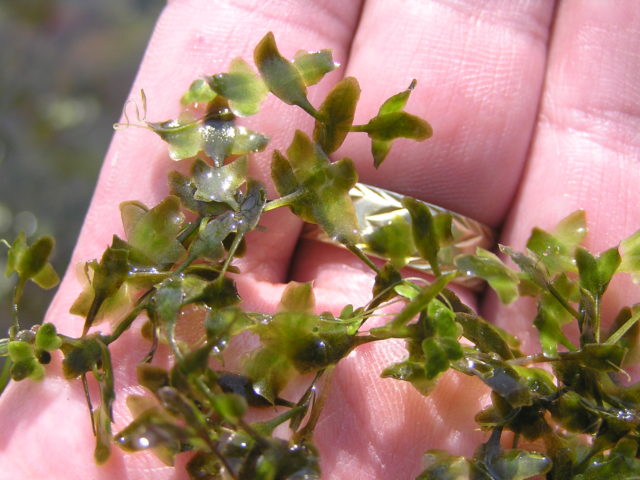
Polygorennik ordinary
Unlike other varieties of duck grass, several filamentous stems depart at once from the plates of the multiroot. On the back of the plate, the plants are purple. Their diameter can be up to 6 mm.

The chemical composition of duckweed grass
The health benefits and harms of duckweed are due to its rich composition. The plant has a lot of useful properties and low toxicity. Because of this, it is widely used in traditional Chinese medicine. In terms of protein, it can rival that of legumes. Another feature of duck grass is its rich supply of iodine. It is often used to treat diseases of the cardiovascular system. The chemical composition of marsh duckweed is represented by the following elements:
- cellulose;
- carotenoids;
- minerals (cobalt, copper, zinc, magnesium, iodine, titanium, calcium and phosphorus);
- flavonoids;
- phospholipids;
- protein;
- vitamins of groups PP, E and C;
- tannins;
- fatty acid;
- polysaccharides.
Medicinal properties of duckweed
Duck herb is widely used in alternative medicine. She began to enjoy popularity in ancient times. The greatest effectiveness was observed in relation to hemorrhoids. With local exposure, duckweed is able to cope with inflammation and herpes.
Thanks to experimental studies, the antimycotic and antibacterial properties of the plant have been officially confirmed. In addition, it is often used as a diuretic. Useful properties of duckweed:
- antipyretic effect;
- diuretic action;
- elimination of pathologies of the thyroid gland;
- anti-febrile action;
- treatment of skin diseases;
- removal of puffiness;
- relief of pain syndrome;
- anti-cold effect;
- stabilization of the emotional state;
- antiparasitic action.
The abundance of medicinal properties of river duckweed makes it an invaluable means of alternative medicine. In severe cases of the disease, it is used to increase the effectiveness of the main therapy. In the initial stages of the disease, it can act as an independent remedy. Indications for the use of duckweed:
- glaucoma;
- psoriasis;
- rheumatism;
- vitiligo;
- diseases of the urinary system;
- diseases of the upper respiratory tract;
- hepatitis;
- swelling;
- impotence;
- malignant formations;
- pathology of the thyroid gland.
The use of duckweed in traditional medicine
Due to its medicinal properties, duckweed is often used in traditional medicine. It is used for the preparation of decoctions, alcoholic infusions, ointments and decoctions. Medicines have anti-inflammatory and immunostimulating activity. They can be used to achieve diuretic and choleretic effects.Among other things, duck grass strengthens the immune system, allowing the body to independently cope with various diseases.
Decoctions
Components:
- 250 ml of water;
- 1 tbsp. l. dry duckweed.
Recipe:
- Raw materials are poured into a deep container and filled with water.
- The drink is infused for 5 minutes.
- Filter the finished broth and take ½ tbsp. before meals. Reception is carried out 3 times a day.
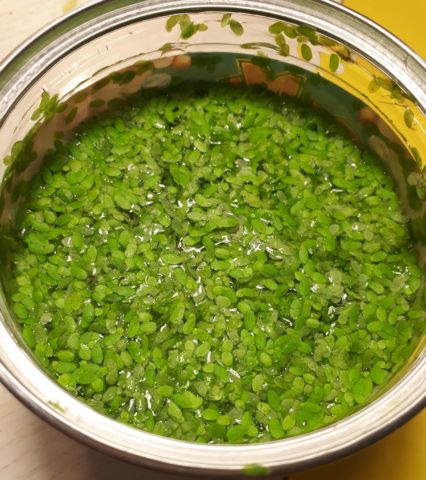
Infusions
Duck herb honey infusion is used to treat skin diseases. It is effective against vitiligo and psoriasis. Internal reception of duckweed infusion is practiced in order to strengthen the immune system.
Ingredients:
- 250 g of honey;
- freshly harvested duckweed.
Recipe:
- Juice in a volume of 250 ml survives from the plant. For this purpose, you can use a blender.
- The components are placed in a deep container and mixed until a homogeneous consistency is obtained.
- The medicine is insisted for a week.
- Reception is carried out in 1 tsp. 3 times a day.
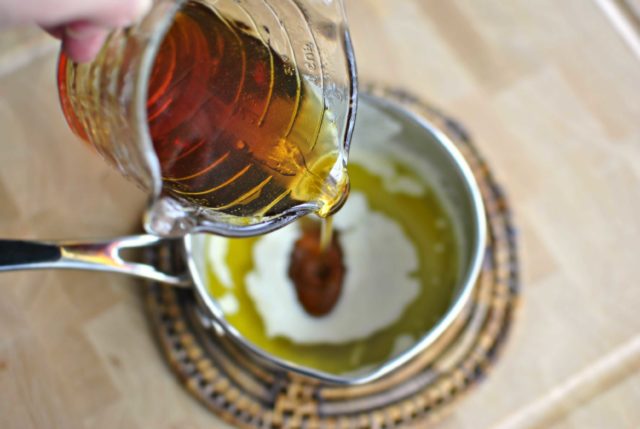
Tinctures
The use of alcohol tincture of duckweed is often practiced to treat diseases of the upper respiratory tract. When applied topically, it is effective against rheumatism and neurodermatitis.
Components:
- 200 ml of vodka;
- 1 tbsp. l. chopped herb routine.
Recipe:
- Dried duckweed is poured into a glass bottle and poured with vodka. It is desirable that the container is made of dark glass.
- The tincture is kept in a dark place for a week. After a specified time, it is filtered.
- The medicine is taken in 15-20 drops, diluted in ¼ st. water. Reception is carried out half an hour before meals 3 times a day.
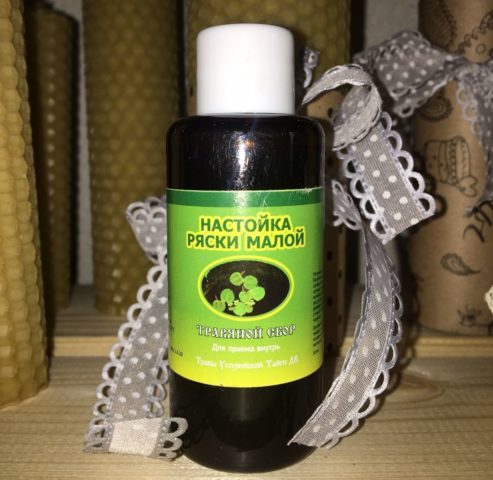
Ointments
Components:
- 50 g butter;
- 350 g of dried duckweed.
Recipe:
- Duck grass leaves are ground into a homogeneous powder using a blender.
- Butter is added to the resulting mixture.
- The ointment should be stored in a cool place. It is used to make turunda for the nose and ears.
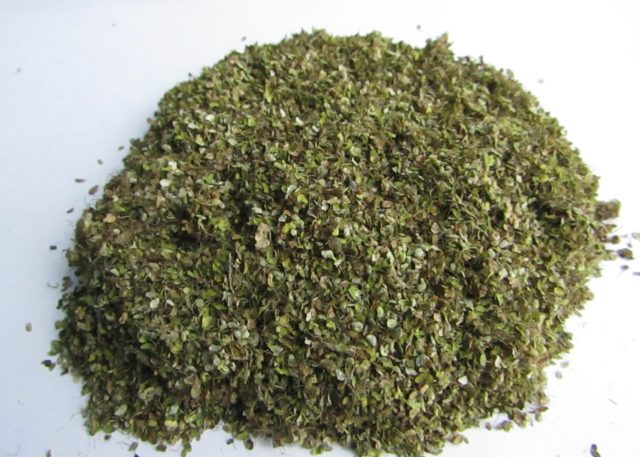
Honey balls
Duckweed is also useful for children. It is used to treat anemia and colds. To improve the taste, honey is added to the medicine. In psoriasis, treatment with honey balls can take 6 months.
Ingredients:
- 200 g of honey;
- 200 g of dried duckweed.
Cooking steps:
- An infusion is prepared from duck grass. Raw materials are poured into 250 ml of hot water and kept under a lid for 15 minutes.
- The filtered and cooled drink is mixed with honey.
- Balls are formed from the resulting mass. They are placed in a refrigerator to solidify.
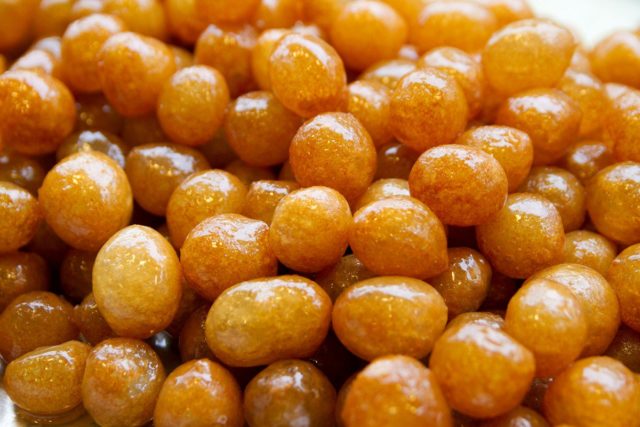
It is allowed to eat no more than 3 balls daily. After the treatment course, you need to take a break of 2 months. If you are allergic to bee products, it is prohibited to take them.
Contraindications
Before using duckweed for medicinal purposes, you need to read its full instructions. Particular attention should be paid to the list of contraindications. These include:
- autonomic dysfunction;
- individual intolerance;
- pregnancy and breastfeeding;
- nervous breakdowns.
Instructions for the use of duckweed herb indicate a high risk of side effects in case of an overdose. In most cases, against this background, nausea and headache develop. Sometimes skin rashes appear, accompanied by itching.
Growing duckweed in an aquarium
Many fish breeders grow aquarium duckweed. It is unpretentious in maintenance and is very useful for the inhabitants of the aquarium. The main value lies in the stimulation of oxygen production. In addition, duck grass does an excellent job of dealing with nitrates and nitrites. Most often, the aquarium is populated with a humpback plant species.
Before introducing duckweed in an aquarium, you need to understand whether it brings benefits or harm. Its disadvantages include rapid growth. Because of this, fish do not receive the required amount of light. But this can be corrected by directing the growth of the plant in the right direction. For this, a special fishing line is placed in the aquarium.
The advantages of aquarium duckweed are much more:
- there is no need to select lighting and supply of carbon dioxide;
- demineralization of space;
- oxygen release during photosynthesis;
- saturation of water with iodine and bromine salts;
- labyrinth fish use duckweed to build nests.
The only conditions for growing a plant is keeping the temperature in the range of 12-30 ° C. Duck grass will be a great decoration for your aquarium with goldfish or scalars. It can serve as food for them. When the need for duckweed disappears, it is simply fished out of the aquarium using a net.
Collection and preparation of grass
When using duckweed in medicine, any part of the plant will do. For collection, it is desirable to give preference to ecologically clean areas. The procedure is carried out in the summer. The collection is carried out with a butterfly net. Get rid of yellowed plates, as they contain toxic substances. The collected grass is immediately laid out on the surface of a clean cloth. In this form, it is dried naturally, protecting it from direct exposure to the sun. It is desirable to form a canopy over the duckweed. It is also permissible to carry out drying in a ventilated area. The raw material can be removed when it starts to break.
Store dried duck herb in a glass container with a lid. You can also use a paper bag or canvas bag for storage. The shelf life of the harvested plant is 1 year. For storage, you need to choose a place protected from light and moisture. Otherwise, duckweed will become covered with mold or lose its beneficial properties.
Conclusion
Medicinal properties and contraindications of duckweed must be taken into account by all supporters of homeopathy. The plant effectively boosts the immune system and has anti-inflammatory activity. When used correctly, it has a positive effect on all life support systems.

